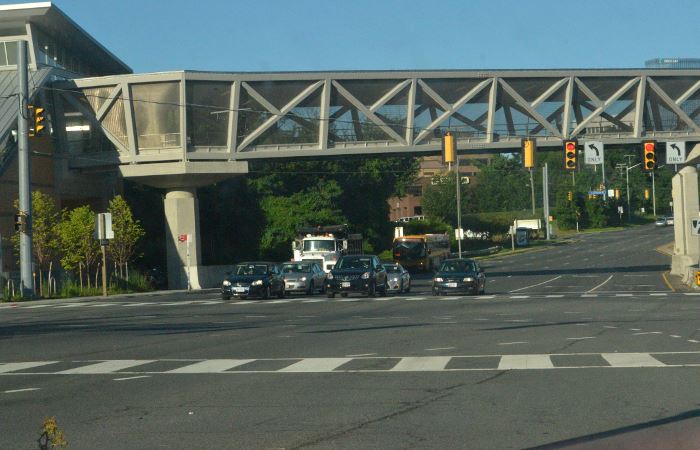When commuters talk about Tysons the number one thing that always comes up is how rough the traffic in Tysons can be. This has been so often repeated, by commuters and news sources, that it has become common knowledge; to question it would be akin to heretics.
I’m not going to say congestion for commuter is a fallacy. What I want to clarify, for people who don’t consistently observe and understand what they are observing, is that the congestion “in” Tysons isn’t a problem. The delays, over and over again, are created by queues that occur miles from the often observed location of Tysons, and are only made into a subject of discussion in Tysons because of the city’s proximity to all of these corridors.
Recall back to your last congested commute within Tysons. Were you trying to leave Tysons via Route 7? Were you heading west on 123 through Vienna? Were you heading east on 123 through McLean? Were you stuck trying to get onto an on-ramp to 495 to cross the American Legion Bridge; or was it that backup caused by the toll booths to the Dulles Tolls Road from International drive?
The reality is transportation engineers have mis-designed and inappropriately addressed real congestion by creating massive, expensive, stacking lanes so that people can now wait in columns of three or four, instead of two, as they approach the bottleneck. Instead of spending money to correct decades of suburban cul-de-sac design, they add another lane where another lane isn’t needed.
Imagine if you were at a grocery store at busy time of day. There’s a huge line of people, so the store manager calls in more employees. But instead of opening up 10 different check out lines he asks the workers to create an assembly line on the single checkout, parsing every single step. Sure for any given customer the process may have gotten a bit faster, but as a whole the queue is exponentially worsened.
 The same happens when we added endless widenings to singular corridors. What we end up having is a complete lack of traffic on these ten lane wide intersections, like this one on Route 123. This was taken at rush hour, 7:45 AM, in the direction of rush hour traffic, eastbound. Does that look like it needs that much pavement? Of course about 200 yards further the road bottlenecks suddenly from four lanes to 2 lanes as it enters McLean. Any amount of benefit that was gained is lost in the zippering affect at the bottleneck.
The same happens when we added endless widenings to singular corridors. What we end up having is a complete lack of traffic on these ten lane wide intersections, like this one on Route 123. This was taken at rush hour, 7:45 AM, in the direction of rush hour traffic, eastbound. Does that look like it needs that much pavement? Of course about 200 yards further the road bottlenecks suddenly from four lanes to 2 lanes as it enters McLean. Any amount of benefit that was gained is lost in the zippering affect at the bottleneck.
Even if McLean were to widen this section, somewhere further there would be a bottleneck, at Old Dominion, or at GW Parkway. So long as we have only a single checkout open, it won’t matter how efficient any particular employee is in his part of the checkout.
In the meantime, we’ve spent unreal amounts of money and plan to spend more, the results of which will be even more unwalkable corridors in Tysons.
Why does this persist? Because fixing the problem is a political nightmare, not because it isn’t right. The correct solution is creating more ways to exit Tysons, but that would mean connecting suburban neighborhoods with traditional urban street grids. Can you see the pitchforks and torches? Until that actually happens, billions will continue to be wasted “solving” traffic in Tysons.
